 W
WSir Falkes de Bréauté was an Anglo-Norman soldier who earned high office by loyally serving first King John and later King Henry III in the First Barons' War. He played a key role in the Battle of Lincoln Fair in 1217. He attempted to rival Hubert de Burgh, and as a result fell from power in 1224. His "heraldic device" is now popularly said to have been a griffin, although his coat of arms as depicted by Matthew Paris in his Chronica Majora was Gules, a cinquefoil argent.
 W
WWalter de Cantilupe was a medieval Bishop of Worcester.
 W
WEbulo de Montibus Born as a younger son of Ebal I de Mont and his wife, Beatrice, Ebal II was first noted in 1237. Born in the Pays de Vaud, now Switzerland then Savoy. The Famille de Mont held the castle at Mont-le-Grand near Rolle. Better known in English records as Ebulo de Montibus, Ebal II de Mont had travelled to England by 1246. A household knight of King Henry III of England, granted much land in England. By 1256 he was part of the Savoyard circle of the Lord Edward, later King Edward I of England. Recorded as a Steward in the household of King Henry III of England from 12th November 1256 until 26th May 1263. A witness for King Henry III at the Mise of Amiens, where he swore for the king's good conduct in accepting King Louis XIVs arbitration. Left England during the Second Barons' War with Queen Eleanor of Provence and Peter II, Count of Savoy and active in attempting to raise an army loyal to the crown. Rewarded for his loyalty by being made Constable of Windsor Castle.
 W
WEdward I, also known as Edward Longshanks and the Hammer of the Scots, was King of England from 1272 to 1307. Before his accession to the throne, he was commonly referred to as The Lord Edward. The first son of Henry III, Edward was involved from an early age in the political intrigues of his father's reign, which included an outright rebellion by the English barons. In 1259, he briefly sided with a baronial reform movement, supporting the Provisions of Oxford. After reconciliation with his father, however, he remained loyal throughout the subsequent armed conflict, known as the Second Barons' War. After the Battle of Lewes, Edward was hostage to the rebellious barons, but escaped after a few months and defeated the baronial leader Simon de Montfort at the Battle of Evesham in 1265. Within two years the rebellion was extinguished and, with England pacified, Edward joined the Ninth Crusade to the Holy Land. He was on his way home in 1272 when he was informed that his father had died. Making a slow return, he reached England in 1274 and was crowned at Westminster Abbey.
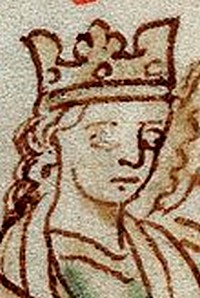 W
WEleanor of Provence was a French noblewoman who became Queen consort of England as the wife of King Henry III from 1236 until his death in 1272. She served as regent of England during the absence of her spouse in 1253.
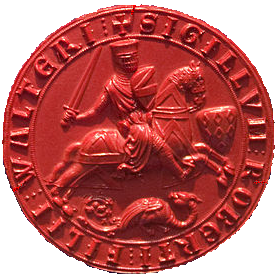 W
WRobert Fitzwalter was one of the leaders of the baronial opposition against King John, and one of the twenty-five sureties of Magna Carta. He was feudal baron of Little Dunmow, Essex and constable of Baynard's Castle, in London, to which was annexed the hereditary office of castellain and chief banneret of the City of London. Part of the official aristocracy created by Henry I and Henry II, he served John in the wars in Normandy, in which he was taken prisoner by King Philip II of France and forced to pay a heavy ransom.
 W
WHenry III, also known as Henry of Winchester, was King of England, Lord of Ireland, and Duke of Aquitaine from 1216 until his death in 1272. The son of King John and Isabella of Angoulême, Henry assumed the throne when he was only nine in the middle of the First Barons' War. Cardinal Guala declared the war against the rebel barons to be a religious crusade and Henry's forces, led by William Marshal, defeated the rebels at the battles of Lincoln and Sandwich in 1217. Henry promised to abide by the Great Charter of 1225, a later version of the 1215 Magna Carta, which limited royal power and protected the rights of the major barons. His early rule was dominated first by Hubert de Burgh and then Peter des Roches, who re-established royal authority after the war. In 1230, the King attempted to reconquer the provinces of France that had once belonged to his father, but the invasion was a debacle. A revolt led by William Marshal's son, Richard Marshal, broke out in 1232, ending in a peace settlement negotiated by the Church.
 W
WJohn was King of England from 1199 until his death in 1216. He lost the Duchy of Normandy and most of his other French lands to King Philip II of France, resulting in the collapse of the Angevin Empire and contributing to the subsequent growth in power of the French Capetian dynasty during the 13th century. The baronial revolt at the end of John's reign led to the sealing of Magna Carta, a document sometimes considered an early step in the evolution of the constitution of the United Kingdom.
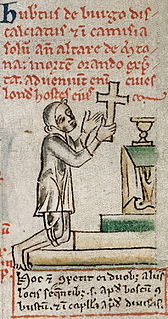 W
WHubert de Burgh, 1st Earl of Kent was an English nobleman who served as Chief Justiciar of England and Ireland during the reigns of King John and of his infant son and successor King Henry III and, as a consequence, was one of the most influential and powerful men in English politics.
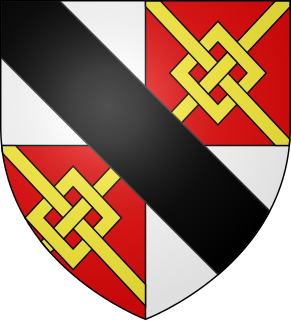 W
WHugh le Despenser, 1st Baron le Despenser was an important ally of Simon de Montfort during the reign of Henry III. He served briefly as Justiciar of England in 1260 and as Constable of the Tower of London.
 W
WSimon de Montfort, 6th Earl of Leicester, later sometimes referred to as Simon V de Montfort to distinguish him from his namesake relatives, was a nobleman of French origin and a member of the English peerage, who led the baronial opposition to the rule of King Henry III of England, culminating in the Second Barons' War. Following his initial victories over royal forces, he became de facto ruler of the country, and played a major role in the constitutional development of England.
 W
WThere have been four different baronies held by the Marmion family, two feudal baronies, one purported barony created by Simon de Montfort and one barony by writ.
 W
WWilliam Marshal, 1st Earl of Pembroke, also called William the Marshal, was an Anglo-Norman soldier and statesman. He served five English kings—Henry II, his sons the "Young King" Henry, Richard I, John, and John's son Henry III.
 W
WSavari de Mauléon was a French soldier, the son of Raoul de Mauléon, Viscount of Thouars and Lord of Mauléon.
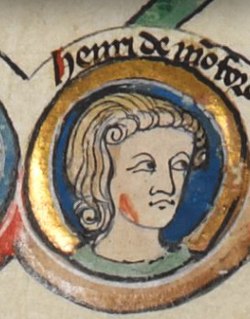 W
WSir Henry de Montfort was the son of Simon de Montfort, 6th Earl of Leicester, and with his father played an important role in the struggle of the barons against King Henry III. Henry's mother was Princess Eleanor of England, a daughter of King John, whose marriage to Simon further increased the foreign influence begun by the king, which was to result in great hostility by those very barons who later revolted against the king.
 W
WRoger Mortimer, 1st Baron Mortimer of Wigmore, of Wigmore Castle in Herefordshire, was a marcher lord who was a loyal ally of King Henry III of England and at times an enemy, at times an ally, of Llywelyn ap Gruffudd, Prince of Wales.
 W
WRichard, second son of John, King of England, was the nominal Count of Poitou (1225–1243), Earl of Cornwall and King of the Romans. He was one of the wealthiest men in Europe and joined the Barons' Crusade, where he achieved success as a negotiator for the release of prisoners and assisted with the building of the citadel in Ascalon.
 W
WSir Richard de Southchurch was a knight and part of the landowning aristocracy of Essex in the thirteenth century. He was High Sheriff of Essex and of Hertfordshire in the years 1265–67, and as such became involved in the Second Barons' War (1264–1267). Southchurch has earned a special place in the historiography of the period due to an episode during the war where he allegedly planned to attack London with incendiary cocks.
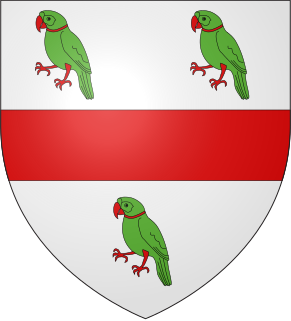 W
WRobert de Thweng was a noble who rebelled against the church authorities in Yorkshire, England.
 W
WAdmiral Sir William de Leybourne, was an English Knight and Military Commander.